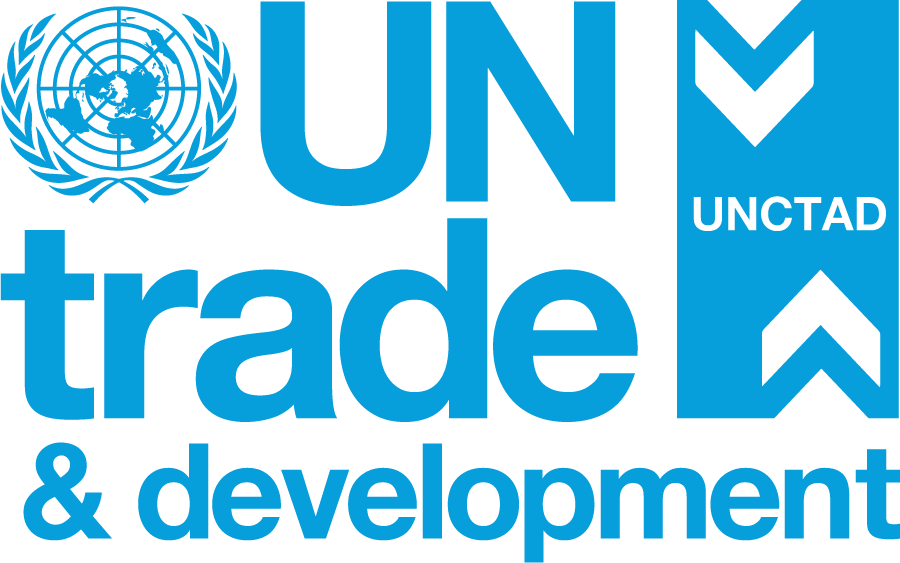Chronic hunger affects over 700 million lives. Trade can be part of the solution by facilitating market supplies, helping stabilize prices and improving access to more resilient food systems.

© Shutterstock/Stoyan Yotov | A port crane loads wheat at Port Varna, Bulgaria.
The world is not on track to end hunger, achieve food security and improved nutrition and promote sustainable agriculture by 2030. Despite sustained reduction, global undernourishment has plateaued since 2020 and remains high. Progress towards eliminating hunger is slowing, particularly due to factors including conflict, economic crises, rising food prices and climate change, with Africa being especially impacted.
Trade plays a crucial role in combating food insecurity by facilitating the efficient movement of food from surplus to deficit regions, helping stabilize prices and improving access to a diverse and nutritious food supply—particularly during local shortages or crises. A recent issue note from UN Trade and Development (UNCTAD) underscores the potential of trade measures to mitigate food crises, as it examines the link between trade and food insecurity, with policy recommendations to support famine relief and strengthen global food security.
Trade is essential to reduce food insecurity
Trade is a fundamental component of agrifood systems. Cereals—central to global nutrition—are traded in large volumes: approximately 25% of global wheat, 14% of maize and 10% of rice production cross international borders each year. In many net food-importing developing countries, these import shares are significantly higher than the global averages. For instance, Egypt imports around 56% of its wheat consumption.
Additionally, about 37% of vegetable oils – a major dietary calorie source – are traded globally. In comparison, trade in all food items combined accounts for roughly 12% of global production.
Most countries around the world are net importers of cereals, with only 34 nations currently classified as net exporters. This imbalance underscores the critical importance of a stable international trade system and the uninterrupted flow of cereals from surplus-producing countries. Trade is essential to meeting global demand and sustaining the livelihoods of millions.
Only a handful of countries export more cereals than they import, and even fewer maintain a significant export surplus. This concentration of export capacity makes international trade a cornerstone of global food security. Without reliable access to foreign supplies, many regions would face food shortages, price volatility and increased vulnerability to climate-related crop failures or geopolitical disruptions.
In light of widespread dependence on imports and mentioned vulnerabilities, the report entitled “Trade against hunger” proposes a mechanism to combat severe food insecurity. It aims to enhance the export capacity and economic resilience of countries facing, or at risk of, severe food insecurity by temporarily eliminating tariffs with flexible rules of origin, supporting compliance with non-tariff measures, improving transport and logistics, as well as facilitating access to essential agricultural inputs to boost food security.
Main challenges: Low diversification of import sources, over dependence on food imports and dependence on imported fertilizers
Imports are often concentrated among a limited number of suppliers, creating vulnerabilities when deliveries are disrupted due to conflict or extreme weather events. For example, Egypt – a country heavily reliant on wheat imports – sourced approximately 80% of its wheat from Ukraine and the Russian Federation.
A positive example of international cooperation to reduce such disruptions is the set of agreements brokered by the United Nations and Türkiye in July 2022: the Black Sea Initiative and the accompanying memorandum of understanding. Between July 2022 and July 2023, these agreements played a key role in supporting global food security by enabling the continued export of food and fertilizers from Ukraine and the Russian Federation. As a result, the FAO Food Price Index fell by 23% from its record high in March 2022.
Access to fertilizers, most of which are imported, is another major challenge for efficient domestic food production. In 2023, net food-importing developing countries spent nearly $2 billion on fertilizers. While crop prices such as those of cereals and soybeans declined, fertilizer prices remained elevated. Urea and potassium chloride prices rose by 18.5% and 11.9%, respectively, while diammonium phosphate (DAP) prices fluctuated. Compared to pre-pandemic levels in December 2019, prices were still significantly higher: 26.6% for urea, 148% for potassium chloride and 75.7% for DAP.
This situation is particularly challenging for smallholder farmers, whose limited financial resources restrict their access to essential agricultural inputs like fertilizers.
Diversification, regional integration and better trade infrastructure can mitigate food insecurity
Countries that rely heavily on food imports must diversify their sources to reduce the risk and impact of supply chain disruptions. As conflicts intensify, extreme weather events become more frequent and marine logistics face growing constraints, it’s increasingly vital for nations to source strategic food commodities from a broader range of suppliers.
Trade plays a pivotal role in ensuring food security, particularly in agriculturally diverse economies such as those in North Africa. Countries with this profile should consider trade policy reforms that support both agrifood production and exports, as well as the import of essential agricultural inputs such as seeds, fertilizers and equipment.
However, high tariffs, tariff escalation and burdensome non-tariff measures remain significant obstacles to the development of regional agrifood value chains. These barriers not only hinder intra-regional trade but also limit the ability of neighbouring countries to build integrated agrifood systems, UN Trade and Development research warns.
In addition to market access obstacles, weak infrastructure poses a major challenge.
Investment in infrastructure is of crucial importance. To effectively combat acute food insecurity and the growing threat of famine, especially in vulnerable regions, there is an urgent need to invest in trade-related infrastructure. Developing economies must be supported through enhanced transport, logistics and compliance infrastructure to facilitate efficient food trade. Strengthening these systems will not only improve access to essential agricultural inputs like fertilizers but also enable the smoother movement of cereals and vegetable oils – key components of global nutrition – from surplus to deficit regions.
To address market access challenges, countries can collaborate to harmonize or mutually recognize standards and technical regulations. Greater regional integration – facilitated through trade agreements – can enhance trade facilitation and improve food availability. This is especially critical for perishable goods such as fruits, vegetables, dairy and meat, as well as strategic staples like wheat, which are particularly vulnerable to delays and high compliance costs at borders.




